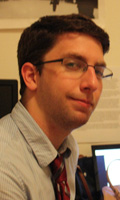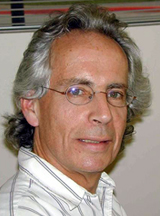Events on April 17, 2015

Sam Quinan, SCI Institute Presents:
Visually Comparing Weather Features in Forecasts
April 17, 2015 at 12:00pm for 1hr
Evans Conference Room, WEB 3780
Warnock Engineering Building, 3rd floor.
Abstract:
Meteorologists process and analyze weather forecasts using visualization in order to examine the behaviors of and relationships between weather features. In a design study conducted with meteorologists in decision support roles, we identified and attempted to address two significant common challenges in weather visualization: the employment of inconsistent and often ineffective visual encoding practices across a wide range of visualizations, and a lack of support for directly visualizing how different weather features relate across an ensemble of possible forecast outcomes. In this talk, we will present a characterization of the problems and data associated with meteorological forecasting, a proposed set of informed default encoding choices that integrate existing meteorological conventions with effective visualization practice, and a set of extended techniques as an initial step toward directly visualizing the interactions of multiple features over an ensemble forecast. We will discuss the integration of these contributions into WeaVER, our functional prototype tool, and also reflect on some of the practical challenges that arise when working with weather data.
Posted by: Nathan Galli

Stan Osher, Professor of Mathematics & Director of Applied Mathematics, University of California, Los Angeles Presents:
What sparsity and L1 optimization can do for you
April 17, 2015 at 2:00pm for 1hr
Evans Conference Room, WEB 3780
Warnock Engineering Building, 3rd floor.
Abstract:
Sparsity and compressive sensing have had a tremendous impact in science, technology, medicine, machine learning and now, in solving multiscale problems in partial differential equations. I will discuss be techniques and applications in these areas. This is joint work with many people.
Bio:
Stanley Osher is a Professor of Mathematics, Computer Science, Chemical Engineering and Electrical Engineering at UCLA. He is also an Associate Director of the NSF-funded Institute for Pure and Applied Mathematics at UCLA. He received his MS and PhD degrees in Mathematics from the Courant Institute of NYU. Before joining the faculty at UCLA in 1977, he taught at SUNY Stony Brook, becoming professor in 1975. Osher is one of the most highly cited researchers in both mathematics and computer sciences with an h index of 100 (according to google scholar). In recent years he has averaged one citation per hour. He has received numerous academic honors and co-founded three successful companies, each based largely on his own (joint) research. He has co-invented and/or co-developed the following widely used algorithms:
1.) Essentially nonoscillatory (ENO), weighted essentially nonoscillatory (WENO) and other shock capturing schemes for hyperbolic systems of conservation laws and their analogues for Hamilton-Jacobi equations;
2.) The level set method for capturing dynamic surface evolution;
3.) Total variation and other partial differential based methods for image processing;
4.) Bregman iterative methods for L1 and related regularized problems which arise in compressive sensing, matrix completion, imaging and elsewhere;
5.) Diffusion generated motion by mean curvature and other threshold dynamics methods.
Osher has been elected to the US National Academy of Science and the American Academy of Arts and Sciences. He was awarded the SIAM Pioneer Prize at the 2003 ICIAM conference and the Ralph E. Kleinman Prize in 2005. He was awarded honorary doctoral degrees by ENS Cachan, France in 2006 and by Hong Kong Baptist University in 2009. He is a SIAM and AMS Fellow. He gave a one hour plenary address at the 2010 International Conference of Mathematicians. He also gave the John von Neumann Lecture at the SIAM 2013 annual meeting. He is a Thomson-Reuters highly cited researcher-among the top 1% from 2002-2012 in both Mathematics and Computer Science. In 2014 he received the Carl Friedrich Gauss Prize from the International Mathematics Union-this is regarded as the highest prize in applied mathematics. His current interests involve information science which includes optimization, image processing, compressed sensing and machine learning and applications of these techniques to the equations of physics, engineering and elsewhere.




